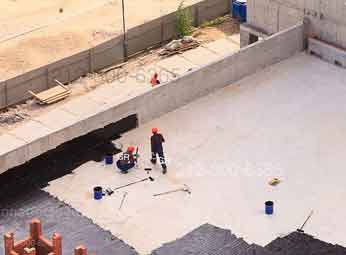While we turn at the future, the relevance of waterproofing technology continues to increase, particularly in the face of evolving climate conditions and increasing rainfall. Homeowners and developers alike are growing conscious of the essential role that adequate waterproofing has in protecting their properties from water damage. It is not just about ensuring spaces dry; it is about safeguarding the strength of buildings, enhancing energy savings, and promoting overall well-being in living and commercial environments.
In this comprehensive exploration of waterproofing methods, we will investigate key topics such as the necessity of waterproofing for all home and property, the monetary benefits of proactive measures, and common misconceptions that need debunking. Additionally, we will provide insights into the differences between interior and exterior solutions, the significance of waterproofing in multiple areas like basements, roofs, and restrooms, and recommendations on how to pick the right products and service providers. Whether you are a property owner tackling self-managed projects or a commercial real estate manager seeking assistance, this guide will equip you with the knowledge you seek to make informed decisions about waterproofing methods.
Essential Hydroproofing Techniques
One of the most crucial techniques in waterproofing is the installation of protective barriers. This involves creating a defensive layer that blocks moisture from seeping into surfaces such as partitions, ceilings, and bases. Products such as waterproof membranes and coatings are typically used in both home and commercial applications. These barriers are particularly vital in areas liable to intense rainfall, ensuring that water does not cause construction damage or foster mold growth.
Another useful method is the use of water management. Proper drainage diverts water away from susceptible areas, mitigating the risks associated with flooding and water accumulation. Trench drains, pumping systems, and drainage channels are essential tools in managing water flow. By strategically placing drainage systems, homeowners can protect basements and foundations, ultimately maintaining the integrity of their property.
Lastly, regular maintenance and inspections play a key role in effective waterproofing. Regularly checking for cracks, gaps, and signs of water damage can help spot issues before they worsen. This preventive approach not only saves money on costly repairs but also prolongs the life of waterproofing systems. Remaining vigilant and upkeeping all waterproofing measures is necessary for any dwelling or building to ensure long-term protection against water damage.
Cost-Effectiveness Overview of Waterproofing Solutions
Putting money into waterproofing can yield substantial long-term savings, establishing it as a wise option for householders and building supervisors alike. By spotting and resolving potential water issues early, you are likely to evade expensive repairs that arise from structural damage, mold cleanup, or various water-related problems. navigate to these guys of conducting waterproofing measures, whether it’s in the basement, roof, or exterior walls, is insignificant compared to the possible financial burden of significant damage and the related repair costs.
Apart from just repairs, waterproofing additionally boost the value of your property. A well-maintained and waterproofed home is more desirable to buyers and renters, culminating in increased resale or rental prices. Additionally, waterproofing reduces the chance of moisture-related issues that can degrade your property's integrity over time, guaranteeing it remains a safe and inviting investment. This element is particularly vital in regions prone to heavy rainfall or flooding, where waterproofing becomes even more necessary.
Additionally, waterproofing boosts better energy efficiency within your home or building. Properly waterproofed spaces aid in avoiding drafts, cut down on the workload on heating and cooling systems, and diminish utility bills. This energy efficiency, together with the avoidance of steep repairs, boosts the overall value of waterproofing investments. In the end, the benefits of waterproofing surpass mere protection against water damage, highlighting its value as a comprehensive investment for any property owner.
Selecting the Best Waterproofing Solutions
Selecting the appropriate waterproofing solutions for your home or edifice is vital to providing lasting protection against water damage. Commence by assessing the specific needs of your property. Various areas may need varied methods; for instance, basements typically call for a combination of interior and exterior waterproofing, while roofs may profit more from high-quality coatings. Take into account elements such as climate, building materials, and the history of hydrological issues in your area when deciding the best strategy.

It is essential to consider DIY options against expert services. While some property owners may choose to tackle smaller waterproofing jobs themselves, larger projects or those that require expert knowledge could be best managed by professionals. Research the pros and cons of each option, including costs, efficacy, and the duration. Engaging a qualified waterproofing contractor can guarantee that the job is done correctly and that you avoid common issues that may arise from subpar work.
In conclusion, emphasize quality over cost when picking materials. Investing in premium waterproofing materials can save you significant money in repairs down the line. Look for coatings and membranes that have demonstrated effectiveness in your specific conditions and that come with solid warranties. Remember that the appropriate waterproofing solution not only safeguards your home but also increases its value and energy efficiency, making your expenditure well worth it.
